Mastering the North Board: Essential Kiteboarding Insights
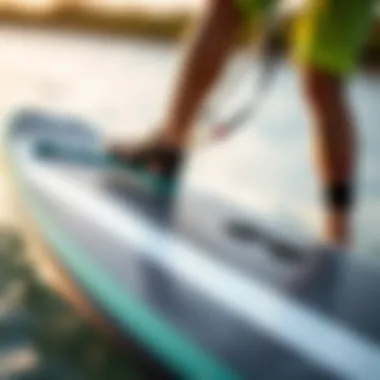
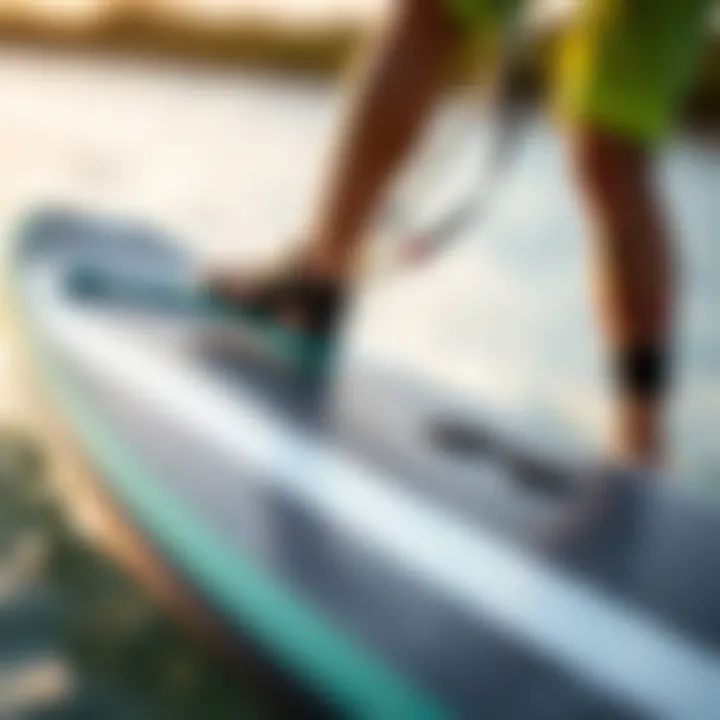
Intro
Kiteboarding finds its spirit in the exhilarating dance between man and nature. It’s not just about catching the wind; it’s also about possessing the right gear that complements one's individual riding style. Among the myriad of options available, the North Board has carved a niche for itself, attracting kiteboarders across various skill levels.
This article embarks on a journey into the world of kiteboarding gear and techniques, with the North Board as our focal point. Whether you're a novice eager to glide across the water or an experienced rider looking to sharpen your tricks, understanding this piece of equipment is pivotal.
As we dive into the intricacies of the North Board—its design elements, materials used, and performance characteristics—we'll also explore essential gear for newcomers and advanced settings for seasoned riders. Each section will piece together insights from expert riders and experiences shared in the community, creating a vivid tapestry of knowledge that enhances your kiteboarding adventure.
Gear and Equipment
When one begins their kiteboarding journey, choosing the right gear can feel like a never-ending maze. Not all boards are created equal, and familiarity with the gear helps to unlock the full potential of the sport. Let's break it down into the essentials for beginners and those ready to step up their game.
Essential Kiteboarding Gear for Beginners
For novices, investing in the right kit makes a world of difference. Below are the fundamental elements to get started:
- Kite: The lifeblood of the sport. Look for a reliable, easy-to-handle model appropriate for lighter winds, such as the North Kiteboarding Neo.
- Board: A beginner-friendly board should be wide and stable. The North Trust is a popular option for its user-friendly shape during those first attempts on the water.
- Harness: A comfortable, adjustable harness is crucial. Opt for an option like the North Kiteboarding XRide, which distributes pressure evenly and allows for extended sessions.
- Wetsuit: Depending on the location and climate, a durable wetsuit offers protection against the elements, while keeping you agile.
- Safety Gear: Always consider wearing a helmet and impact vest, especially when starting out. They can save you from nasty knocks.
A common mistake for new riders is to overlook the importance of a proper kiteboarding lesson. Professional guidance not only speeds up the learning process but ensures safety on the water.
Advanced Equipment for Experienced Riders
As riders hone their skills, the choice of equipment becomes a tool for self-expression and performance enhancement. Here’s a glimpse of the advanced setups:
- Performance Kites: Models like the North Rebel give experienced riders the lift and speed needed to execute ambitious tricks and maneuvers.
- Narrower Boards: For those who embrace speed and precision, narrower boards such as the North Spark can facilitate sharper turns and faster rides.
- Custom Harnesses: Tailor-fit options allow for personalized comfort and control, essential for long sessions in challenging conditions.
- Foil Boards: These boards, with a hydrofoil attached, let riders glide over the water in style, opening up spaces to ride at lower wind speeds.
Sometimes, the smaller details make the most significant impact. Each piece of gear should align with your style and the conditions in which you ride, refining the experience further.
"Success in kiteboarding comes down to understanding your equipment and knowing how to harness the wind to your advantage."
Techniques and Tips
As any seasoned rider would tell you, technique is your best friend when it comes to kiteboarding. Let’s explore foundational techniques for beginners and delve into advanced tricks that can elevate your riding.
Basic Riding Techniques for Newbies
Starting muscle memory and building confidence is key for any newcomer. Here are essential techniques to practice:
- Proper Positioning: Keeping your knees bent and stance steady is fundamental.
- Directional Control: Use small brake inputs on the kite to steer it while riding, enabling better control in varying conditions.
- Pop and Landing: Focus on your pop with the board. A solid takeoff will aid in smoother landings, crucial during jumps.
- Riding Upwind: Learning to ride upwind efficiently is an early goal; it saves energy and opens more riding spots.
Expert Tricks to Elevate Your Skills
As riders become more confident, the hungry pursuit of new challenges begins. Here’s a handful of advanced moves to consider:
- Jumping and Twists: The thrill of adrenaline comes in mastering jumps; adding spins and rotations will level up your game.
- Handle Passes: This trick demands timing and finesse, as you pass the control bar back and forth while airborne.
- Board Off Moves: Taking the board off your feet during a jump can leave spectators in awe and videos stunning!
Practicing these techniques can take time, and what matters is persistence. No great rider sprung out overnight; it’s a gradual climb filled with learning curves.
As we flesh out the realms of gear and techniques, remember that each session on the water adds to the story of your kiteboarding experience. Stay curious, keep practicing, and let the thrill of kiteboarding guide you toward mastery.
Understanding Kiteboarding Equipment
In the exhilarating world of kiteboarding, mastering the nuances of equipment can mean the difference between a thrilling ride and a challenging experience. Understanding kiteboarding equipment isn’t just about knowing what’s out there. It provides a solid foundation for making informed choices that can significantly enhance performance on the water. The kite, control bar, lines, and board all play vital roles, and each piece is uniquely designed to complement the other.
The kite acts as the powerhouse, generating propulsion through its design and wind catching capabilities. Likewise, the control bar and lines are the lifelines, enabling direct engagement with the kite while providing essential control. The board, while frequently overlooked, is crucial as it directly affects the rider experience by influencing speed, maneuverability, and overall enjoyment.
Eyeing the right board specifically can be a game-changer. Selecting gear that fits personal skill level and preferred riding style is paramount. For instance, a beginner might favor a board that prioritizes stability, while a seasoned kiteboarder might look for something offering agility and speed to perform tricks. Each surfboard shape and flex configuration suits various riding conditions and styles, showing that the relationship between rider and equipment is quite personal.
Thus, laying a solid groundwork on kiteboarding equipment helps riders avoid confusion down the road when tackling more advanced techniques or when opting for gear upgrades. Knowing the intricacies involved can help optimize the riding experience, making kicks in the waves feel that much more exhilarating, while also boosting confidence as you progress in skills.
Overview of Kiteboarding
Kiteboarding merges elements of surfing, windsurfing, and paragliding into a unified sport that’s as demanding as it is rewarding. As the rider, you harness the wind through a specially designed kite that provides both lift and propulsion, allowing the rider to glide across the water's surface with grace. The excitement lies in its versatility, as kiteboarding can be practiced in various conditions, from flat waters to choppy seas.
The gear used is specially tailored, enabling riders to perform an array of tricks and maneuvers. Whether it’s soaring in a jump or carving a smooth turn, the harmony between wind, water, and rider showcases the beauty of this sport. Another intriguing aspect is the ever-evolving technology behind the gear, which constantly enhances safety and performance, ensuring that kiteboarding continues to attract adventurers and sports enthusiasts alike.
The Role of Boards in Kiteboarding
Boards in kiteboarding serve as the crucial link between the rider and the ocean, allowing for greater performance and control. These boards come in different shapes, sizes, and flex patterns, each designed for specific conditions and riding styles.
- Shape and Profile: The board's outline affects how it interacts with water. A larger surface area offers more stability and easier planning, ideal for beginners or those riding in lighter winds. Conversely, a narrower board facilitates higher speeds and sharper turns, catering to riders looking to execute tricks or race.
- Construction Materials: The choice of materials affects the board’s weight and durability. Common materials include fiberglass and epoxy, with some boards incorporating carbon fiber for a lightweight yet strong build. Each material offers unique properties, impacting responsiveness and ride feel.
- Fin Setup: Fins on the board contribute to stability and control, with a variety of configurations available. A greater fin count provides enhanced grip during turns, whereas a board with fewer fins allows for smoother transitions. Choosing the right fin setup is key to achieving optimal control and performance on the water.
Ultimately, the right board is an extension of the rider, enhancing each session through improved handling and responsiveness. Understanding these elements not only arms you with the knowledge to make better decisions but also contributes towards shaping your ride experience, elevating your confidence whether you're just starting out or pushing the limits in advanced maneuvers.
The North Board Explained
In the world of kiteboarding, few elements hold as much sway over performance and enjoyment as the choice of board. The North Board showcases a set of features engineered to amplify a rider's experience on the water. Not merely a flat surface underfoot, its design brings together artistry and technology, making it a vital player in the kiteboarding game. Its importance is not just about riding; it’s about engaging with the wind, water, and your own skills to achieve the thrills that define this sport.
Design Features
Shape and Profile
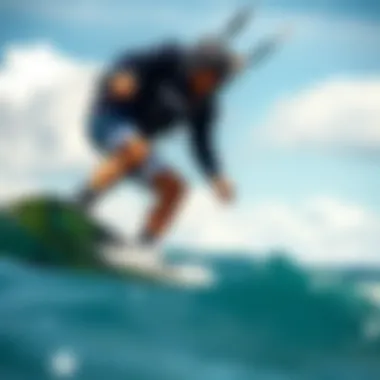
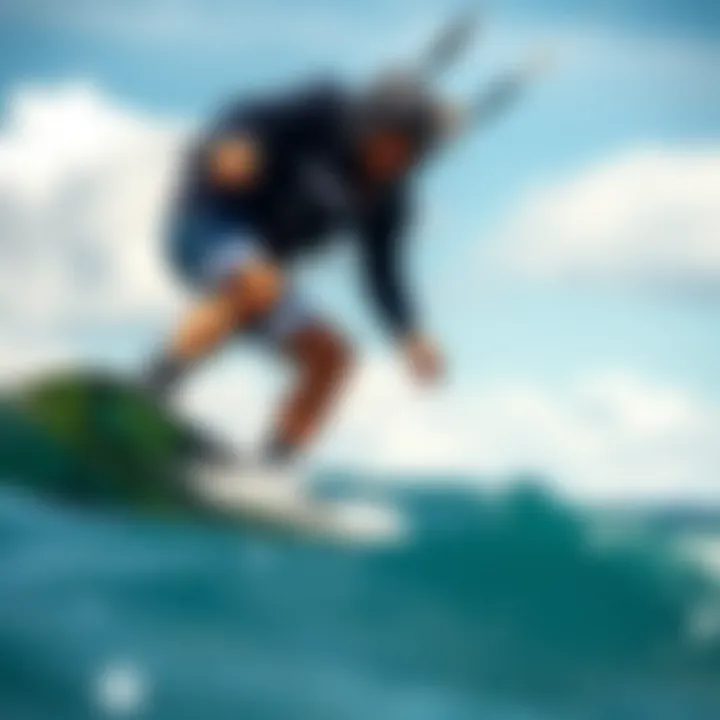
The shape and profile of the North Board can make or break your ride. The layout, whether it’s a twin-tip or directional style, influences how you carve through the waves. Twin-tips, with their symmetrical design, allow for easy riding in both directions, which is a major perk, especially for those just getting their feet wet. Notably, the slightly concave nose helps to slice through the water with less resistance, reducing drag.
It's this smooth gliding that gives riders confidence, striking a balance between flow and control. If you're looking to push boundaries, the high rockers in the profile facilitate effortless pop for jumping, while also ensuring landings feel softer.
Construction Materials
Delving into construction materials, the North Board is built for resilience. Many models incorporate carbon fiber, renowned for its strength-to-weight ratio. This means the board remains light and reactive, making it significantly easier to handle during maneuvers. Riders appreciate how lightweight boards can lead to less fatigue over long sessions.
However, the use of epoxy resins also contributes to durability, which makes these boards robust enough to withstand the inevitable tumbles you might encounter while learning new tricks. The longevity of materials ensures that your investment pays off in extended usage.
Fin Setup
The fin setup is another critical aspect to explore. Varying fin sizes and placements can drastically alter your riding experience. For instance, larger fins enhance grip when carving sharp turns, while smaller fins favor speed and agility.
Riders often customize their fin setups to match their specific riding style or the conditions of the water. A good rule of thumb here is to start with a balanced setup and adjust based on personal preference. Doing so can significantly fine-tune how well you interact with the wind and water, allowing for a bespoke experience on the board.
Performance Characteristics
Speed and Control
Speed and control are intricately linked in kiteboarding, with the North Board adeptly catering to both. Many enthusiasts marvel at how the board's design allows for sharp turns at high velocities. The careful contouring of the edges increases your ability to respond to the demands of the wind, providing both stability and rapid acceleration. Thanks to its lightweight construction, you’ll notice more responsiveness, empowering you to take control in changing conditions.
Stability and Maneuverability
Stability often paints the picture of confidence when riding. With a well-designed board, you’ll notice less bouncing around, especially in choppy waters. The North Board offers a solid base, thanks to its shape and materials, ensuring that any maneuver feels smoother and more fluid. This stability instills a sense of safety, enabling you to push your limits while remaining composed.
Weight Considerations
Weight plays a notable role in performance. A lighter board allows for effortless handling, which is a significant component for riders hoping to maximize their capabilities. However, it's not just about lightweight; it's also about balance. Too light can result in instability in strong winds. The North Board achieves an optimal balance, striving to provide agility while ensuring enough heft to cut through wind resistance.
"A well-crafted board isn't just a tool; it's an extension of the rider, transforming winds and waves into your playground."
Navigating the nuances of the North Board's design and performance traits can heavily influence how one approaches the craft of kiteboarding. Whether you’re dipping your toes into the sport or pushing for stunts, understanding these elements will help you select the perfect board to enhance your kiteboarding journey.
Selecting the Right North Board for Your Style
Choosing the right North Board is akin to picking the perfect dance partner; you want a match that complements your moves and pushes you to perform at your best. Understanding not just the equipment, but your own needs is crucial. This section dives into the nitty-gritty of how to align your riding style with the unique features of different North Boards.
Rider Skill Levels
Beginners
For those just starting on the water, the choice of board is quite significant. A beginner-friendly North Board usually features a wider shape and a forgiving flex, offering stability and ease in various conditions. The key characteristic? User-friendliness. Beginners benefit from a board that helps facilitate smoother rides while learning the ropes (or should we say lines?) of kiteboarding.
One unique feature of beginner boards is their rounded edges, which aid in making turns more forgiving and help prevent serious wipeouts. The advantages here are clear—allowing new riders to build confidence as they progress—while disadvantages include potentially less pop for jumps, which can be a concern for those eager to advance quickly.
Intermediate
As riders gain skills, they often seek something that allows for more versatility—enter the intermediate North Board. These boards strike a delicate balance between performance and ease of use. A key characteristic is their responsiveness; intermediates can handle sharper maneuvers while still being stable.
Most intermediate boards come with a medium flex, which enhances control and pop but still allows for comfortable rides. The unique feature here is the board’s ability to perform well both in flat waters and choppy conditions, making it ideal for riders who might crave variety in their sessions. A downside is that they often require a bit more technique, which might be challenging for those still wobbly on the board.
Advanced
When it comes to advanced riders, the North Board often morphs into a performance machine. These boards are designed for agility and speed, featuring a narrower profile and stiffer build. The key characteristic at this level is precision. Experienced kiteboarders look for boards that enhance tricks and provide maximum feedback when carving or jumping.
A unique feature of advanced boards is the finely-tuned fin setup, which plays a crucial role in controlling speed and grip. The trade-off here is that advanced boards demand a higher skill level to harness their full potential; poorly timed maneuvers usually lead to a less enjoyable experience. Thus, while they are a beneficial choice for experienced riders aiming to take their craft to new heights, they might leave some intermediate-level riders feeling overwhelmed.
Board Size and Flex
When diving into board size and flex, consider them as the muscles of a kiteboard. Size impacts overall performance, enabling riders to navigate different types of water and conditions. In addition, flex affects how a board handles under pressure, influencing your power, speed, and responsiveness.
- Board size: Influences the amount of buoyancy and stability. Larger boards float better, making them ideal for newer riders. Smaller boards offer more maneuverability but require skill to balance.
- Flex: Affects how the board reacts to the water. Stiff boards provide better pop for jumping, while flexible boards give a smoother ride.
Understanding the interplay between size and flex will clearly clarify the selection process, ensuring that each rider is equipped properly for their personal kiteboarding journey.
Techniques for Maximizing Performance
In kiteboarding, the edge between a good ride and a great one often hangs on technique. Whether you're gliding across the water or launching into the sky, mastering specific skills can boost your overall performance. Proper techniques not only enhance your control but also make for a safer experience. With all the variables at play—the wind, your board, and your skill—it’s vital to make the most of each aspect. In this section, we delve into fundamental riding techniques and advanced maneuvers, uncovering what sets successful kiteboarders apart from the rest.
Basic Riding Techniques
Stance and Position
The stance and position of a kiteboarder are crucial. A solid stance entails having your knees slightly bent, feet shoulder-width apart, and your core engaged, allowing you to remain adaptable to the dynamics of the water and wind. This positions your body to effectively absorb shocks and maintain balance, the key to a smooth ride.
- Key Characteristic: Stability.
- Why It’s Beneficial: Proper stance minimizes fatigue and maximizes control over your board.
- Unique Feature: Maintaining a centered weight distribution keeps your board responsive, helping you make quick adjustments. However, it does require practice to find that sweet spot.
Edge Control
Edge control is the ability to manipulate the angle of your board in relation to the water. It’s like steering a ship; an adept kiteboarder knows just how much to lean back against the pull of the kite.

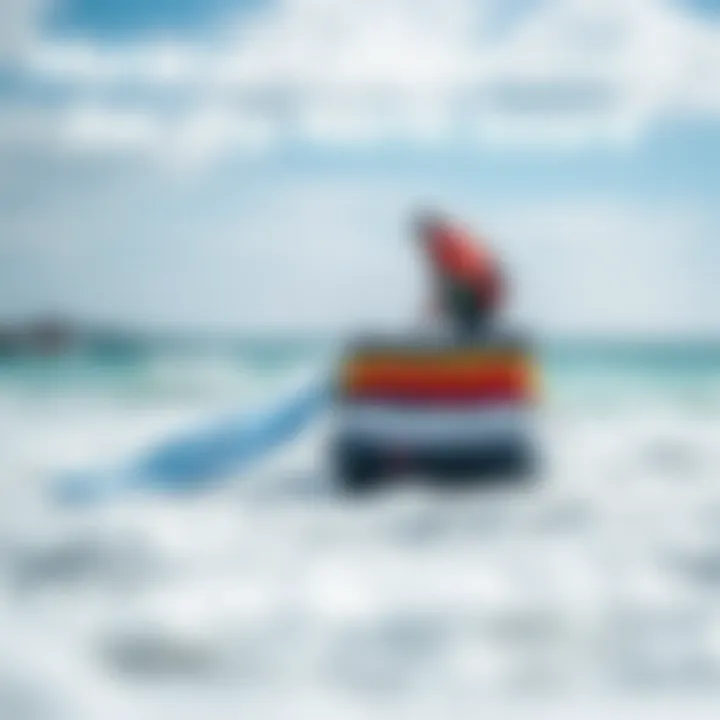
- Key Characteristic: Precision.
- Why It’s a Popular Choice: It allows kiteboarders to maximize speed while maintaining control, crucial for performing tricks or navigating choppy waters.
- Unique Feature: Mastering edge control can dramatically improve your upwind capability, though it also requires a good sense of balance and timing.
Speed Management
Speed management can make or break your session. Understanding how to adjust your speed in response to various conditions is paramount. By managing your speed, you ensure a balance between maintaining momentum and not overwhelming yourself.
- Key Characteristic: Responsiveness.
- Why It’s a Beneficial Choice: Proper speed enables smoother transitions and simplifies the execution of maneuvers.
- Unique Feature: Adapting your speed to circumstances, like gusty winds or surf conditions, enhances safety. However, it can be challenging to gauge at first, requiring repeated practice in various settings.
Advanced Maneuvers
Jumping Techniques
When we talk about jumping techniques, we’re really touching on a rite of passage in kiteboarding. The thrill of soaring through the air connects riders to the ultimate kiteboarding experience. To execute a jump effectively, timing the pull on the kite and your takeoff angle are essential.
- Key Characteristic: Timing.
- Why It’s Popular: A well-executed jump provides not only exhilaration but also raises your skills to a higher level.
- Unique Feature: The ability to add rotation or flips while in the air opens a vast repertoire of tricks. However, the risk of injury is higher without proper technique and safety awareness.
Carving
Carving is a technique that allows the rider to make graceful turns, slicing through the water as opposed to skidding. This technique maximizes speed and control, as it utilizes the edge of the board.
- Key Characteristic: Fluidity.
- Why It’s Beneficial: Carving enhances the riding experience, enabling smooth transitions and better control over the board.
- Unique Feature: The technique uses body weight shifts to maintain speed, but mastering it takes patience and practice.
Tricks and Spins
Tricks and spins represent a climax of skill development in kiteboarding. Mastering various spins and tricks showcases a rider's proficiency and creativity on the board.
- Key Characteristic: Creativity.
- Why It’s a Popular Choice: Tricks add flair to a rider's performance, making each session more exciting and engaging.
- Unique Feature: While they elevate your riding, tricks require strong foundational skills; without them, attempting advanced maneuvers can lead to falls or injury.
Mastering these techniques allows kiteboarders to harness the true potential of the North Board, enhancing performance while keeping it fun and engaging.
Maintaining Your North Board
Taking care of your North Board isn't just about keeping it looking good; it's crucial for maximizing performance and ensuring longevity. A well-maintained board can take your kiteboarding experience from mediocre to magnificent. Just like a car needs regular oil changes, your board requires some TLC. Investing time in maintenance can enhance your ride, safety, and even save you some bucks in the long run. Let’s dive into how to keep your North Board in top shape.
Routine Care and Maintenance
Cleaning and Repair
One of the most important facets of cleaning and repair is removing the salt and sand that can cling to your board after a day on the water. Trust me, neglecting this can lead to wear and tear that diminishes its lifespan. A simple rinse can work wonders, but for tougher stains, a mild detergent might just do the trick.
Key to this maintenance practice is the checking of fins and straps. Loose or damaged fins can ruin your ride as they affect your control. They also serve as a good indicator to what might be going wrong with the board. You might say it’s like checking your car's tires — if they're not in good shape, you don't want to take it out for a spin. Address small repairs promptly; a tiny crack today can become a gaping hole tomorrow, which can be a costly fix.
Advantages of keeping up with cleaning and repairs include:
- Improved performance in the water.
- Extended lifespan of the board.
- Enhanced safety while riding.
Storage Tips
Storing your board properly is nearly as critical as using it correctly. Temperature changes can warp the materials, and prolonged exposure to the sun can fade it faster than you can say "kiteboarding!" Recommendations include placing it in a cool, dry area, ideally in a padded bag for protection against bumps and bruises when not in use.
The unique feature of effective storage tips lies in its proactive approach. You're not just putting it away; you're essentially extending the life of your gear by preventing deterioration. With all the excitement around using the North Board, it can be easy to forget these important practices. A board kept in optimal conditions will always be your reliable partner in high winds or calm waters.
- Benefits of proper storage include:
- Preservation of the board’s materials and structure.
- Reduced risk of accidental damage.
- Convenient access for future riding sessions.
Assessing Damage
Recognizing when your North Board needs attention is half the battle. Check the surface for any signs of damage—nicks, cracks, or discoloration can indicate it’s time for some serious maintenance. Regular inspections can prevent minor issues from snowballing into significant repairs. You don’t wanna be in a position where you're on the water, only to find out your gear is all but ready to call it quits.
Popular Destinations for Kiteboarding
The world of kiteboarding is as expansive as the ocean itself. Choosing the right destination can be decisive for both your enjoyment and skill development. It’s not merely about nice winds; certain locations boast unique characteristics that can significantly enhance one’s kiteboarding experience. The following sections will highlight some of the top kiteboarding spots from around the globe, inspecting their climates and conditions that render them favorites among enthusiasts.
Top Locations
North America
When one thinks of kiteboarding in North America, places like Cape Hatteras in North Carolina immediately come to mind. The region is renowned for its consistent winds and expansive shallow waters, making it an apt playground for all levels of boarders. The key characteristic here is the bay's flat water, perfect for learning tricks or just getting the hang of things in smoother conditions.
One unique trait of North America is its accessibility. Many destinations, from the warm beaches of Florida to the stunning landscapes of the Outer Banks, provide varied riding experiences. However, wind conditions can fluctuate, and it’s usually best to visit during the spring and fall months. Just keep an eye on weather forecasts, as conditions can change faster than you can unpack your gear.
Europe
Europe offers diverse kiteboarding landscapes, from the windy shores of the UK to the exotic beaches of Tarifa in Spain. The Mediterranean climate ensures that kiteboarders can enjoy sunny conditions nearly year-round, with reliable winds that charm riders from around the globe. Tarifa, often cited as the kiteboarding capital of Europe, stands out for its southwesterly Thermol winds. This unique wind pattern creates optimal conditions, especially in the summer months, attracting both novice and advanced riders alike.
However, Europe is not without its challenges. Some areas can get crowded, particularly during the peak summer season. Still, there are plenty of hidden gems waiting to be discovered, like the less-traveled beaches in Italy or Portugal. Venturing off the beaten path can lead to spectacular experiences away from the bustling crowds.
Asia
Asia is bursting with kiteboarding potential, especially locations like Bali and the beaches of Thailand. These areas are well-known not just for their breathtaking views but also for their consistent wind patterns, especially during the monsoon season. In places like Bali, the mix of warm winds and scenic backdrops creates a perfect blend for an exhilarating ride.
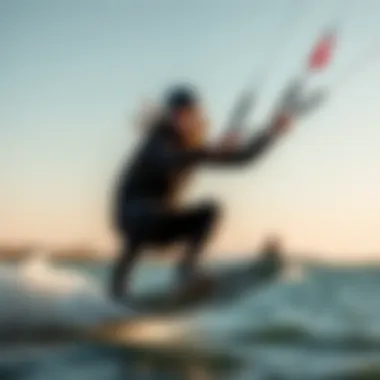
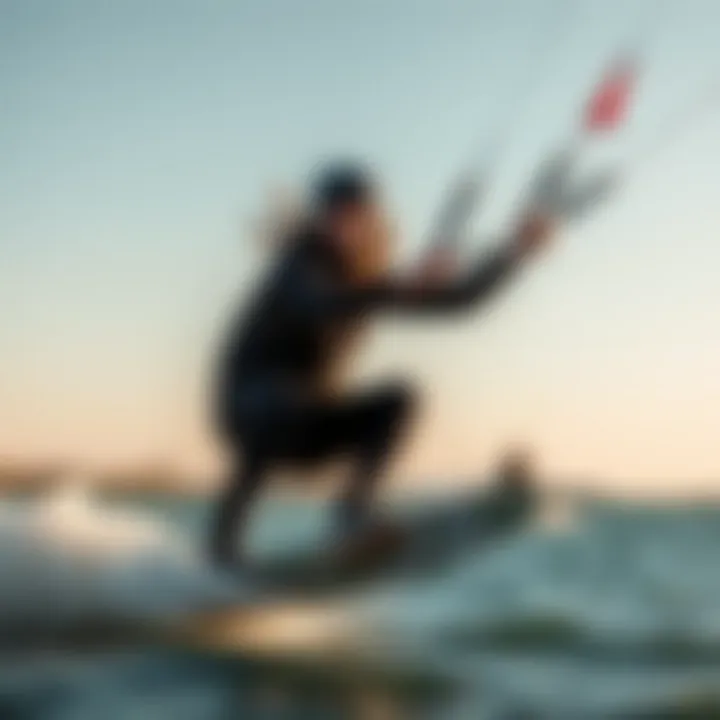
Despite its advantages, traveling to Asia may present some logistical issues regarding equipment transport or accessibility to reliable kiteboarding shops. Also, while the weather can be outstanding, it's crucial to check local conditions to avoid sudden changes typical during the wet season. Nevertheless, for those willing to navigate these potential hurdles, the rewards can be colossal.
Kiteboarding Conditions to Consider
While exploring destinations boils down to personal preferences, certain consideratons are vital to getting the most out of your kiteboarding experiences. Here are some major factors:
- Wind Consistency: Different locations offer varying wind strengths and reliability. Always check long-range forecasts to ensure conditions suit your skill level and preferences.
- Water Quality: Flat water differs from choppy conditions, depending on your desired level of challenge. Consider if you want to practice jumps or simply enjoy a leisurely ride.
- Crowd Levels: Popular destinations can sometimes feel congested. Exploring lesser-known spots can lead to unexpected discoveries and solitary sessions.
- Local Regulations: Some regions have specific rules regarding kiteboarding to protect marine life and shore areas. Familiarize yourself with local practices to promote safer riding.
In short, understanding these kiteboarding conditions and destination highlights can significantly affect your experience on the North Board. Every kiteboarding location has its charm, and knowing what to look for can turn a good day into a great one.
Community and Cultural Aspects
Kiteboarding has long surpassed being just an adventurous pastime; it’s developed into a vibrant community rich with diverse cultures and shared values. As kiteboarders ride waves and catch winds together, they also forge communities that offer support and encouragement to each other. There’s no denying that the essence of kiteboarding thrives on its social interactions, fostering an inclusive atmosphere that invites everyone, from the greenhorn to the seasoned rider.
The Growth of Kiteboarding Communities
In recent years, as more folks have flocked to the sport, kiteboarding communities have burgeoned worldwide. Local groups often emerge around certain beaches or as part of clubs that not only organize events but also provide education and guidance for newcomers. This burgeoning interest has seen clubs like KiteWorldWide in Europe rallying enthusiasts for meetups and training camps, thus promoting camaraderie and knowledge exchange.
Each community has its own flavor, shaped by local cultures, regulations, and conditions suitable for kiteboarding. From the stunning beaches of Tarifa, Spain, to the southeastern shores of the United States, these localities unify participants through shared passions and experiences. They often facilitate workshops, encouraging novices to learn from their more advanced peers, helping bridge the gap between skill levels.
Events and Competitions
Kiteboarding events and competitions serve as gathering points, allowing enthusiasts to connect, compete, and celebrate one of their shared loves. They can be categorized into two main types: local events and international competitions.
Local Events
Local events play a pivotal role in building community spirit among kiteboarders. They are often characterized by a laid-back atmosphere where participants have the chance to enjoy a series of activities, ranging from friendly races to skill showcases. These events often foster participation rather than competition, which makes them especially appealing to beginners.
The uniqueness of local events lies in their accessibility; they attract everyone from curious onlookers to expert riders. With organizations like the North American Kiteboarding Association organizing casual meet-and-greets, new riders feel welcomed into the fold.
"Local kiteboarding events create an inviting space for all skill levels, ensuring that newcomers are embraced rather than overwhelmed."
However, challenges do arise, such as the necessity for weather conditions that favor kiteboarding. Sometimes, events get canceled or adjusted to fit the surf. Yet, these unpredictable moments become shared stories among participants, further solidifying bonds within the community.
International Competitions
On the flip side, international competitions bring a different flavor to the kiteboarding scene. These events showcase the pinnacle of skill and technique, attracting world-class riders from across the globe. Competitions like the World Kiteboarding League draw substantial crowds and serious media attention, which amplifies the exposure of kiteboarding as a sport.
One of the key characteristics of international events is the standardization of judging and rules, which presents riders with a fair and transparent competition ground. While they focus heavily on performance, these competitions also serve as merging grounds for cultures, highlighting how the sport transcends borders.
However, international competitions can sometimes create an intimidating environment for less experienced riders. There’s often perceived pressure to perform, which could deter some individuals from participating. Despite these high stakes, the chance to witness elite performances can inspire many riders to push their own limits.
In summary, whether through local or international events, kiteboarding communities not only enrich the sport but also create memorable experiences, paving the way for friendships and shared love of riding the wind. As enthusiasts navigate their kiteboarding journeys, they do so not just as individuals but as part of a larger family that celebrates each’s unique contribution.
Safety Considerations
Safety is a cornerstone in the kiteboarding realm, especially when it involves utilizing specialized gear like the North Board. The thrill that kiteboarding provides can easily be overshadowed by potential risks if precautions aren’t taken seriously. Understanding safety considerations is not just about protecting oneself but also about fostering a respectful and conscientious community that values each participant's well-being. This segment outlines crucial aspects that kiteboarders should keep in mind to ensure a safe and enjoyable experience while navigating the captivating waters.
Understanding Risks
Kiteboarding can be exhilarating, no question about it. However, every exhilarating ride comes with inherent risks. Factors such as wind conditions, water conditions, and user error can escalate into dangerous situations for even the most seasoned kiteboarders. Here are a few key risks to watch out for:
- Changing Weather Conditions: Wind can be fickle. An unexpected gust or shift can turn a fun session into a perilous situation. It’s vital to stay informed about local weather patterns, and it's wise to trust your instincts. When in doubt, err on the side of caution.
- Equipment Failure: From lines snapping to boards losing stability, equipment malfunctions can happen at the worst possible time. Regularly inspecting your gear, particularly your North Board, will help ensure you're always ready for your next adventure.
- Collisions: Whether it's with other kiteboarders or obstacles in the water, collisions can lead to severe injury. Maintaining a safe distance from others and being aware of your surroundings are not just recommended—they're essential.
In addition, understanding personal limitations is crucial. If you’re still honing your skills, you should avoid venturing out in challenging conditions to avoid unnecessary risks.
Equipment Safety Guidelines
When it comes to safety, keeping your equipment in good shape is your first line of defense. Here are some essential guidelines to consider:
- Regular Inspections: Before hitting the waves, check your North Board for any signs of wear and tear. Look for cracks in the board, frayed lines, or any rust on necessary attachments.
- Proper Storage: After a day on the water, store your gear properly. Sunlight and moisture can deteriorate materials quickly. Consider keeping your board in a protective bag away from direct sunlight when not in use.
- Harnessing Techniques: Your harness plays a central role in controlling your kite and board. Ensure it fits snugly and is in good condition. A loose or faulty harness can lead to an unnecessary accident by reducing your control over the kite.
- Safety Leashes: Always use a safety leash with your kite. This simple addition can prevent your kite from flying away if you fall or lose control, safeguarding both your gear and those around you.
- Stay Informed: Attend local kiteboarding safety workshops or training sessions. These are great opportunities to learn practical skills while interacting with fellow enthusiasts.
"Preparation is the key to safety in kiteboarding. By taking these precautions, you not only protect yourself but also contribute to a safer environment for everyone."
Epilogue
In concluding this exploration of the North Board and its multifaceted role in the kiteboarding realm, it becomes evident how this gear transcends mere functionality. The North Board isn't just a piece of equipment; it embodies a bridge between experience and thrill, catering to both novices and seasoned veterans who find freedom in each ride.
Final Thoughts on the North Board
The North Board stands out due to its remarkable design and the thoughtful integration of advanced materials. These features contribute significantly to performance, making it a worthy investment for anyone serious about kiteboarding. With options tailored for various skill levels, the North Board ensures that riders—whether they're still finding their feet or soaring through the skies—can fully leverage the potential of every wave and gust.
- Durability is a hallmark of the North Board. Many riders have noted that they maintain their performance even after significant use.
- Stability and control are evident, particularly in challenging conditions, allowing for a smooth ride that boosts confidence.
Kiteboarders who engage with the North Board often find themselves embracing the sport on a deeper level, not just as a hobby but as a lifestyle. This connection goes beyond the water, fostering bonds among individuals who share a passion for adventure.
Engagement with the Kiteboarding Community
Importantly, engagement with the kiteboarding community enhances the overall experience. The North Board users are not just isolated riders; they're part of a global network. From local meetups to international competitions, kiteboarding events serve as a rich tapestry of shared experiences and camaraderie. Participating in these gatherings can significantly enhance skill acquisition through peer support and inspiration.
Online platforms such as reddit.com and facebook.com are treasure troves for tips, tricks, and discussions that further one's understanding of kiteboarding.
Ultimately, engaging with fellow kiteboarders engenders not only technical improvement but also enriches the spirit of adventure that defines kiteboarding. Whether you’re trading tips about the latest equipment or planning meetups at scenic locations, being part of this community can be just as thrilling as nailing that perfect jump.
"In riding, it’s not just about the board; it’s about the connection between the rider, the wind, and the waves."
The North Board is more than a tool—it's a key to unlock the vast potentials of kiteboarding, amplifying not just the joy of the ride but the community that thrives on it.















